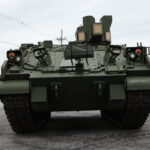The Domestic Nuclear Detection Office (DNDO) this month and last awarded over two dozen contracts and grants worth about $12 million for basic and exploratory research, small business funding, and technology demonstrations to industry and universities. The two-year old agency also says that it has made strides since its inception in advancing research and development in several areas. For example, DNDO is finding new materials to do radiological detection with that are more effective or less expensive or easier to…
Contract Updates
CORRECTION: The contract announced on Sept. 29 2025 (for A-GAS US Inc., Bowling Green) – $31,442,629
CORRECTION: The contract announced on Sept. 29, 2025, for A-GAS US Inc., Bowling Green, Ohio (SPE4A7-25-D-0386) for $31,442,629 was not awarded.
UPDATE: Somo Lens LLC (Santa Fe Springs, California (SPE2DF-26-D-0004) – $37,500,000)
UPDATE: Somo Lens LLC,* Santa Fe Springs, California (SPE2DF-26-D-0004, $37,500,000) has been added as an awardee to the multiple award contract for optical lens program for the Defense Logistics Agency Electronic Catalog, issued against solicitation SPE2DE-24-R-0002 and awarded on May…
UPDATE: Hologic Sales and Service LLC (Marlborough, Massachusetts (SPE2D1-26-D-0005) – $95,000,000),
UPDATE: Hologic Sales and Service LLC, Marlborough, Massachusetts (SPE2D1-26-D-0005, $95,000,000), has been added as an awardee to the multiple award contract for medical equipment and accessories for the Defense Logistics Agency Electronic Catalog, issued against solicitation SPE2DH-21-R-0002 and awarded Feb.…
Vertex Aerospace LLC (Madison, Mississippi) – $
Vertex Aerospace LLC, Madison, Mississippi, was awarded an undefinitized contract action with a not-to-exceed price of $ 20,995,905 for F-16 Systems Program Office Foreign Military Sales (FMS) support. This contract action involves FMS support for contractor logistics support (CLS) for…













